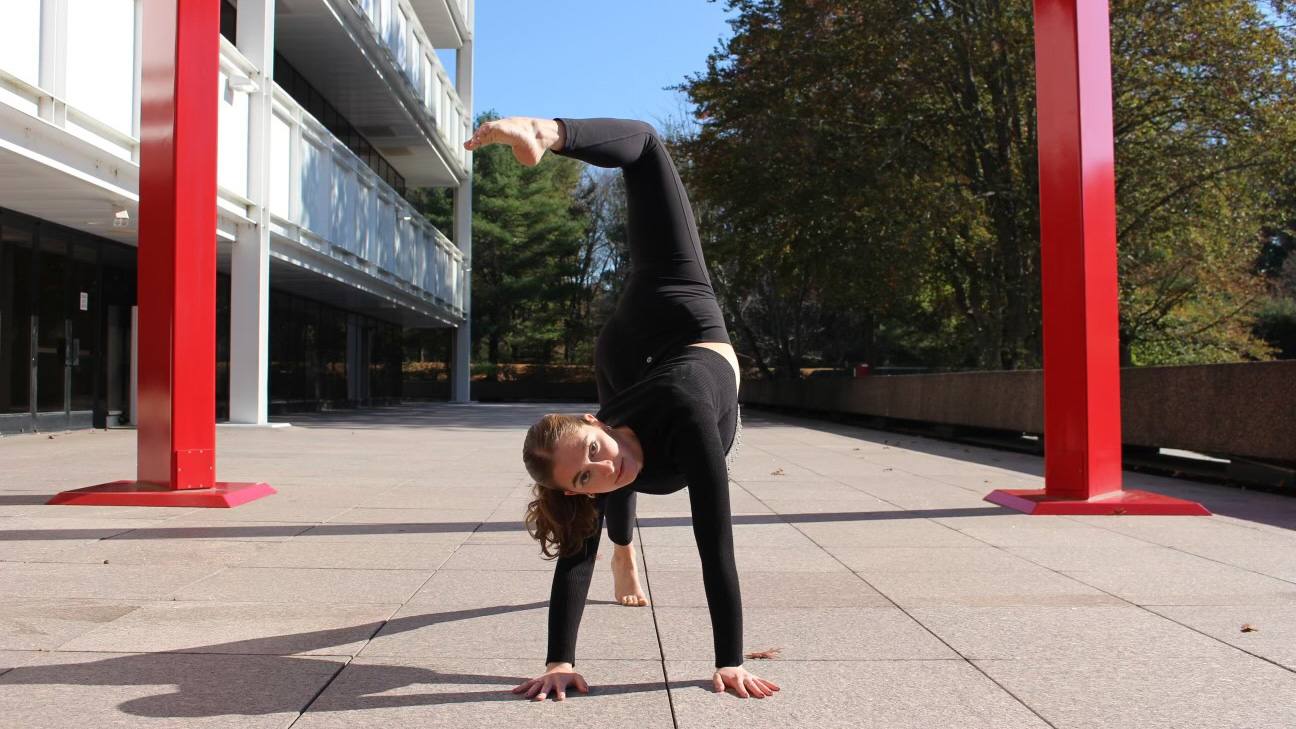-
Health & Wellness
Dancer reclaims her life after years of chronic pain

Abbie Langton started dancing at age 3. Although she's trained across the spectrum of dance genres — including ballet, tap, hip hop and jazz — lyrical and contemporary are her favorites.
Abbie's passion for performing led her to receive a scholarship for competitive dance at a university in Connecticut. But during her sophomore year, debilitating pain in her arm and neck forced her to hang up her dance shoes.
Trouble finding a root cause
Pain wasn't new to Abbie. When she was in the third grade, she remembers experiencing swelling in her left arm, along with chest pain. Because she was so young, though, she couldn't articulate what she was feeling.
"My doctor ordered a bunch of tests, worried it might be congestive heart failure because of the swelling in my left arm and chest pain," Abbie says. "The test results ended up being inconclusive, so my doctor decided it wasn’t congestive heart failure, which was great news, but we still didn’t know what it was."
Next, the focus turned to lymphedema, a chronic condition caused by a buildup of lymph fluid in the body that causes tissues to swell. Still, because of Abbie's young age, her doctor decided to forego testing to confirm a diagnosis and, instead, gave her a compression sleeve to wear to reduce the swelling.
Yet even with the sleeve, Abbie's pain continued.
"At every physical, I'd tell them that I was still experiencing pain, but they'd brush it off and keep pushing my concerns aside," Abbie recalls.
A life on hold

By the time Abbie got to college, she'd learned to live with — and dance through — the pain. But during her second year of college, when she started experiencing severe pain in the back of her neck in addition to her arm and chest, Abbie's roommate told her she needed to get help.
"My roommate told me, 'This isn't normal. You need to go somewhere,'" Abbie says.
Abbie started with an orthopedic doctor in Connecticut, who sent her to a vascular surgeon, who eventually recommended a doctor in Boston.
"That was the beginning of the downward spiral of medical appointments," Abbie says. "I was getting really frustrated. I felt like my entire life was on hold. I couldn't dance. I couldn't really work. I couldn't sit at a desk for a long period of time. And at 20 years old, that was my entire life — I was a student and a dancer, and I couldn't do either well. My mental health was plummeting."
Abbie heard from the doctor's office in Boston that they couldn't get her in for nine months. Although she lives in Massachusetts and attends school in Connecticut, Abbie started looking into Mayo Clinic in Florida. Her parents had recently bought a vacation home near the Jacksonville campus, and Abbie was at her wit's end.
Everything Abbie read about Mayo Clinic was positive. When she called, she was able to get an appointment quickly — much sooner than the nine months the Boston doctor's office had offered.
Finding help at Mayo Clinic
Right away, Abbie's experience with Mayo Clinic matched everything she'd read about it.
"It's different from any other medical institution," she says. "For one, they didn't treat me like a hypochondriac. At that point, because I was young and petite and looked healthy, I felt like so many people were looking at me and assuming I just wanted attention, despite me saying over and over again that I had chronic pain."
Dr. Sam Farres, chief of the Vascular Surgery Division at Mayo Clinic in Florida, and his team, which includes Michael Adalia, nurse practitioner, and Dr. Steven Clendenen, anesthesiologist, ordered a full-body workup. The first discovery was a Chiari malformation, which occurs when the lower part of the brain pushes down into the spinal canal. The second was thoracic outlet syndrome, or TOS, a rare disorder that involves compression of the nerves, arteries or veins in the lower neck and upper chest.
Dr. Farres says TOS is hard to diagnose. But it starts with believing what the patient tells you — and then performing a series of tests to rule out everything other than TOS.
Once Dr. Farres and his team had collected enough evidence that pointed to TOS, they started treatment: a nerve block followed by a rib resection (or removal of a rib) and scalenectomy (or removal of the scalene muscle, which passes through the thoracic outlet).
"I really trusted Dr. Farres," Abbie says. "He educated me a lot, taking the time to make me feel comfortable and explain things to me in a language I could understand. And he was the first person to say, 'This is what's wrong, and this is what we’re going to do about it.' He knew how important getting back to living my life was."
Dr. Farres points to TOS as a condition that steals people's passion. "It depletes their life's meaning, their identity," he says. "It can be very life-limiting."
Reclaiming her life
Just two weeks after her surgery, Abbie returned to school. A few months later — because she wasn't able to lift weights or dance yet — she took up long-distance running, participating in 5Ks and other endurance events.
"I needed to do something active," Abbie says, noting that, just recently, at age 21, she was able to start dancing again. "I probably could've started a little bit sooner, but I didn't want to push myself."
Overall, Abbie says she's in a much better place today.
"I either saw or talked with close to 20 doctors in my pursuit of answers to my pain," she says. "I always knew something was wrong. And it was so defeating to hear time after time that it must be in my head. It wasn't until Mayo Clinic that I found answers and help."







